
The Grave Creek Mound in the Ohio River Valley in West Virginia is one of the largest conical-type burial mounds in the United States, now standing 62 feet (19 m) high and 240 feet (73 m) in diameter. The builders of the site, members of the Adena culture, moved more than 60,000 tons of dirt to create it about 250–150 BC.
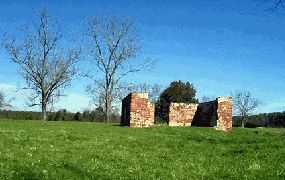
Green Spring Plantation in James City County about five miles (8.0 km) west of Williamsburg, was the 17th century plantation of one of the most unpopular governors of Colonial Virginia in North America, Sir William Berkeley, and his wife, Frances Culpeper Berkeley.
Richneck Plantation was a property in colonial Virginia, located on the Virginia Peninsula on the northern shore of the James River between Hampton Roads and Jamestown. The Richneck manor house's foundation was discovered during construction of the George J. McIntosh elementary school, and became an archeological dig, then listed on the National Register of Historic Places.
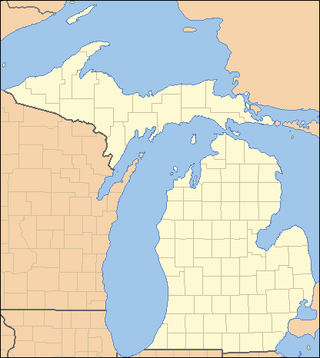
This is a list of properties on the National Register of Historic Places in the U.S. state of Michigan.
This National Park Service list is complete through NPS recent listings posted January 17, 2025.

Buildings, sites, districts, and objects in Virginia listed on the National Register of Historic Places:
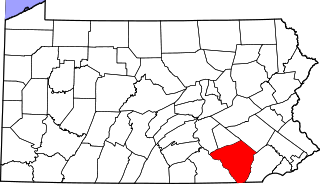
This is a list of the National Register of Historic Places listings in Lancaster County, Pennsylvania.
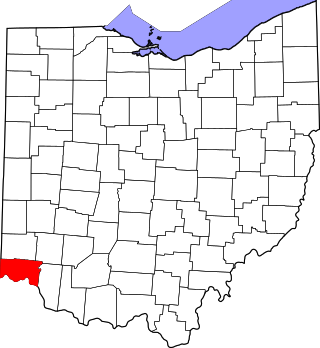
This is a list of the National Register of Historic Places listings in Hamilton County, Ohio.
Richard Carey was from Elizabeth City County, Virginia. He studied law and then practiced in the county courts.

Flowerdew Hundred Plantation dates to 1618/19 with the patent by Sir George Yeardley, the Governor and Captain General of Virginia, of 1,000 acres (400 ha) on the south side of the James River. Yeardley probably named the plantation after his wife's wealthy father, Anthony Flowerdew, just as he named another plantation "Stanley Hundred" after his wife's wealthy mother, Martha Stanley. A "hundred" was historically a division of a shire or county. With a population of about 30, the plantation was economically successful with thousands of pounds of tobacco produced along with corn, fish and livestock. Sir George paid 120 pounds to build the first windmill in British America.
Samuel Stephens was the Governor of the Albemarle Settlements from 1667 until his death in late 1669. He was appointed by the Lords Proprietor to succeed William Drummond.

This is intended to be a complete list of the properties and districts on the National Register of Historic Places in Warren County, Ohio, United States. The locations of National Register properties and districts for which the latitude and longitude coordinates are included below, may be seen in an online map.

This is a list of the National Register of Historic Places listings in Ross County, Ohio.

Rosegill is a historic plantation house and farm complex located near Urbanna, Middlesex County, Virginia. It has been listed on the National Register of Historic Places since 1973.

Denbigh Plantation, also known as Mathews Manor, is a historic archaeological site located at Newport News, Virginia.

First Denbigh Parish Church Archeological Site is a historic archaeological site located at Newport News, Virginia. The site is located on the bluff overlooking the Warwick River at the mouth of Church Creek. It took its name from nearby Denbigh Plantation and was constructed in 1636.
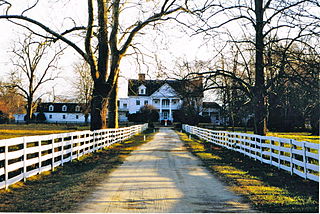
Warner Hall is a historic plantation in Gloucester County, Virginia, United States. Augustine Warner, progenitor of many prominent First Families of Virginia, and great-great-grandfather of President George Washington established the plantation in 1642 after receiving a royal land grant, and would serve in the House of Burgesses, as would many later owners. While Augustine Warner Jr. operated the plantation and served as speaker of the House of Burgesses, rebels associated with Bacon's Rebellion sacked and looted it, as well as made it their headquarters after they sacked Jamestown. Warner sought compensation for goods valued at £845, or the equivalent of what 40 slaves or servants would produce in a year, which led to litigation with fellow burgess William Byrd, whom Warner blamed for supporting Bacon but who portrayed himself as a fellow victim. Warner had no male heirs, although his daughter Mildred would become the grandmother of George Washington, and his daughter Elizabeth married John Lewis, who assumed the house and surrounding plantation, as well as served in the House of Burgesses, as did their descendants until circa 1820. The house burned in 1840, and the two surviving outbuildings were joined circa 1900 to become a Colonial Revival mansion. It is currently operated as a country inn. The cemetery on the property, which includes graves of the Warner and Lewis families, has been maintained by the Association for Preservation of Virginia Antiquities since 1903.
Cole Digges (1691-1744) was a Virginia merchant, planter and politician who helped establish Yorktown, Virginia, and served more than two decades on the Virginia Governor's Council after representing Warwick County in the House of Burgesses.
William Cole was a lawyer, planter and government official in the Colony of Virginia. He served decades on the Virginia Governor's Council and briefly as the Colony's Secretary of State. He aided Governor William Berkeley during Bacon's Rebellion but fell out of governmental favor when a letter he had written to former Governor Francis Howard, baron Howard of Effingham, was revealed to Lieutenant Governor Francis Nicholson.

Miles Cary I was the first member of the Cary family to live in America, and to serve in both houses of the Virginia General Assembly. The son of prominent Bristol families which sustained substantial losses during the English Civil Wars, he emigrated to the Virginia colony by 1645 and opened a store, then married well and developed plantations in Warwick County. Cary held various local offices and twice represented Warwick County as a burgess before being named to the Virginia Governor's Council. Cary amassed significant landholdings, and supported governor William Berkeley. He died at his home of wounds received defending the Virginia colony against a Dutch incursion on the James River six days earlier. His namesake son and two other descendants of the same name also served in the Virginia General Assembly. His grave is located at Windmill Point in modern day Newport News, formerly Warwick County.






















